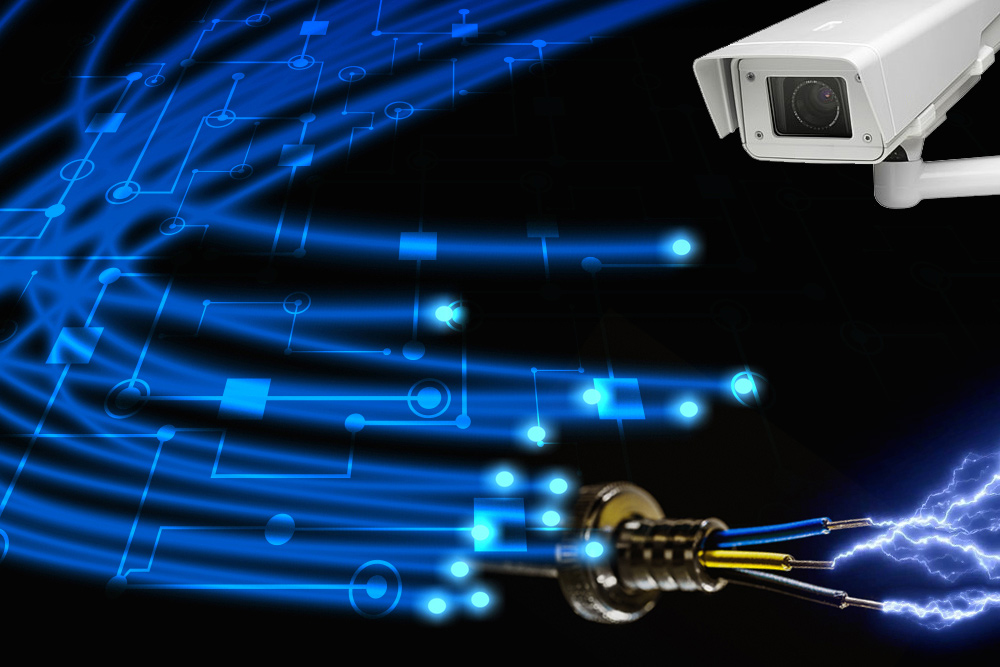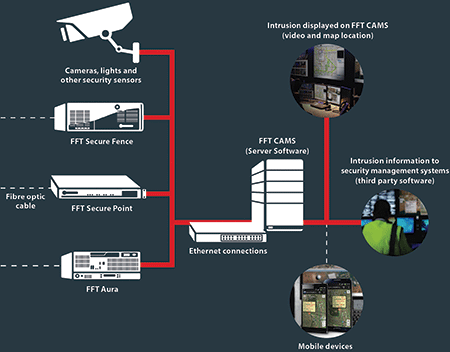Investing in a Fiber Optic Security System: How It’s the Next Step of Secure Systems
Investing in a Fiber Optic Security System: How It’s the Next Step of Secure Systems
Blog Article
Boost Your Safety With Advanced Fiber Optic Safety Systems
In an age where security is vital, innovative fiber optic safety systems present an engaging remedy for enhancing security throughout various atmospheres. These systems not just flaunt exceptional data transfer and rate for high-resolution surveillance however additionally supply exceptional strength versus outside interferences. As companies significantly seek dependable methods to shield their assets, the integration of ingenious modern technologies like AI and IoT within fiber optic structures increases essential concerns regarding their efficiency contrasted to typical systems. What effects do these advancements hold for future security steps?
Benefits of Fiber Optic Safety And Security
Utilizing the advantages of fiber optic technology significantly enhances protection systems across various applications. One of the key advantages is the boosted bandwidth capacity, enabling the transmission of huge quantities of information at high rates. This is specifically vital for real-time video surveillance, where high-resolution feeds can be sent out without latency, making certain prompt action abilities.
Additionally, optical fiber display exceptional resistance to electro-magnetic disturbance, which is essential in atmospheres with potential signal disturbances. This dependability ensures regular performance in important protection operations. Fiber optic cable televisions are much less vulnerable to tapping and unapproved access compared to traditional copper electrical wiring, thereby improving information stability and discretion.
Another remarkable advantage is the longevity of fiber optic systems; they are much more resistant to ecological factors such as wetness, temperature level fluctuations, and destructive materials. This resilience translates to reduce upkeep prices and longer life expectancies for protection installations.
Finally, the light-weight nature of fiber optic cable televisions helps with simpler installment and routing, especially in complex frameworks (fiber optic security system). Inevitably, the integration of fiber optic innovation right into security systems not only reinforces security procedures yet also optimizes operational effectiveness
Secret Functions to Take Into Consideration
When evaluating fiber optic protection systems, numerous key functions need to be taken into consideration to make certain optimum efficiency and performance. Examine the system's discovery variety and sensitivity; an extensive array permits for keeping an eye on big locations, while high level of sensitivity makes sure that even small disruptions are found immediately.
Next, think about the combination capabilities of the system. A fiber optic protection system must perfectly interface with existing protection procedures such as video cameras and alarm systems, producing a cohesive protection network.
Longevity and ecological resistance are also essential functions. Ensure that the system is made to stand up to severe climate condition and potential physical risks, as this will certainly extend its operational life-span.

Lastly, check out the scalability of the system. A robust fiber optic safety system must be quickly expanding to fit future requirements without considerable overhauls. By thoroughly taking into consideration these attributes, you can select a fiber optic protection option that improves safety and safety and security in your environment.
Setup Process Review
To effectively apply a fiber optic security system, an organized installation procedure is important. This procedure begins with a detailed site evaluation to establish the particular protection needs and to recognize optimal places for fiber optic wires and security gadgets. Following this analysis, the installation group will certainly develop a comprehensive strategy, consisting of cable television paths, needed tools, and compliance with local guidelines.
Next, the setup entails laying the fiber optic cords, guaranteeing they are secured from environmental factors and physical damage. Appropriate handling methods are important, as fiber optic cords are delicate and can be conveniently damaged. After the cabling is set up, ports and discontinuations are thoroughly finished to make certain signal integrity.
The succeeding phase includes installing security tools such as electronic cameras, motion detectors, and alarm, all incorporated with the fiber optic network. Extensive testing is conducted go now to validate that all elements are working correctly and to make certain ideal performance.

Contrasting Fiber Optic to Standard Solutions
The development of safety and security technology has actually brought about substantial innovations in the contrast between fiber optic systems and traditional copper-based systems. Fiber optic systems make use of light to send data, providing remarkable transmission capacity and rate compared to their copper equivalents. This leads to enhanced information transmission capacities, making fiber optics ideal for high-resolution video surveillance and real-time monitoring.
In addition, fiber optic cords are resistant to electro-magnetic disturbance, decreasing the probability of signal destruction triggered by external variables. This characteristic ensures constant efficiency, also in challenging atmospheres. In contrast, typical copper systems are much more susceptible to disturbance, leading to prospective vulnerabilities in safety applications.
Toughness is one more benefit of fiber optic systems. They are less susceptible to harm from environmental variables such as moisture and temperature level fluctuations, which can jeopardize copper wiring. Moreover, optical fiber are lighter and thinner, enabling less complicated installation and minimized physical impact.
Nonetheless, typical systems often tend to have reduced initial expenses, making them attractive for budget-conscious jobs. While fiber optic systems might call for a greater upfront investment, their visit this web-site lasting advantages-- such as reduced maintenance costs and higher integrity-- often outweigh the preliminary cost, placing them as a premium selection for modern safety and security requirements.
Future Fads in Protection Technology
Emerging trends in security technology are poised to change the landscape of surveillance and threat detection - fiber optic security system. As organizations increasingly deal with advanced risks, developments such as man-made knowledge (AI) and equipment understanding (ML) are coming to be indispensable to protection systems. These modern technologies boost the capacity of fiber optic systems by enabling real-time information evaluation, determining anomalies, and automating reactions to potential violations
In addition, the combination of the Net of Points (IoT) is changing safety frameworks. IoT devices can provide thorough situational recognition and assist in seamless communication between various safety components. This interconnectedness permits extra reliable tracking and faster incident feedback times.
Biometric verification is likewise gaining energy, offering find here a greater degree of safety and security via special physical qualities. As this technology advances, it is likely to be incorporated right into fiber optic systems for improved accessibility control.
Final Thought
Finally, progressed fiber optic security systems stand for a considerable advancement in security and security innovation. Their superior bandwidth, resistance to disturbance, and toughness facilitate trustworthy tracking and information stability. As these systems integrate AI and IoT abilities, they boost the overall protection framework, making sure robust security for properties. The shift from typical systems to fiber optic remedies mirrors an expanding fad in the direction of much more reliable and effective safety actions in an increasingly complex technological landscape.
Report this page